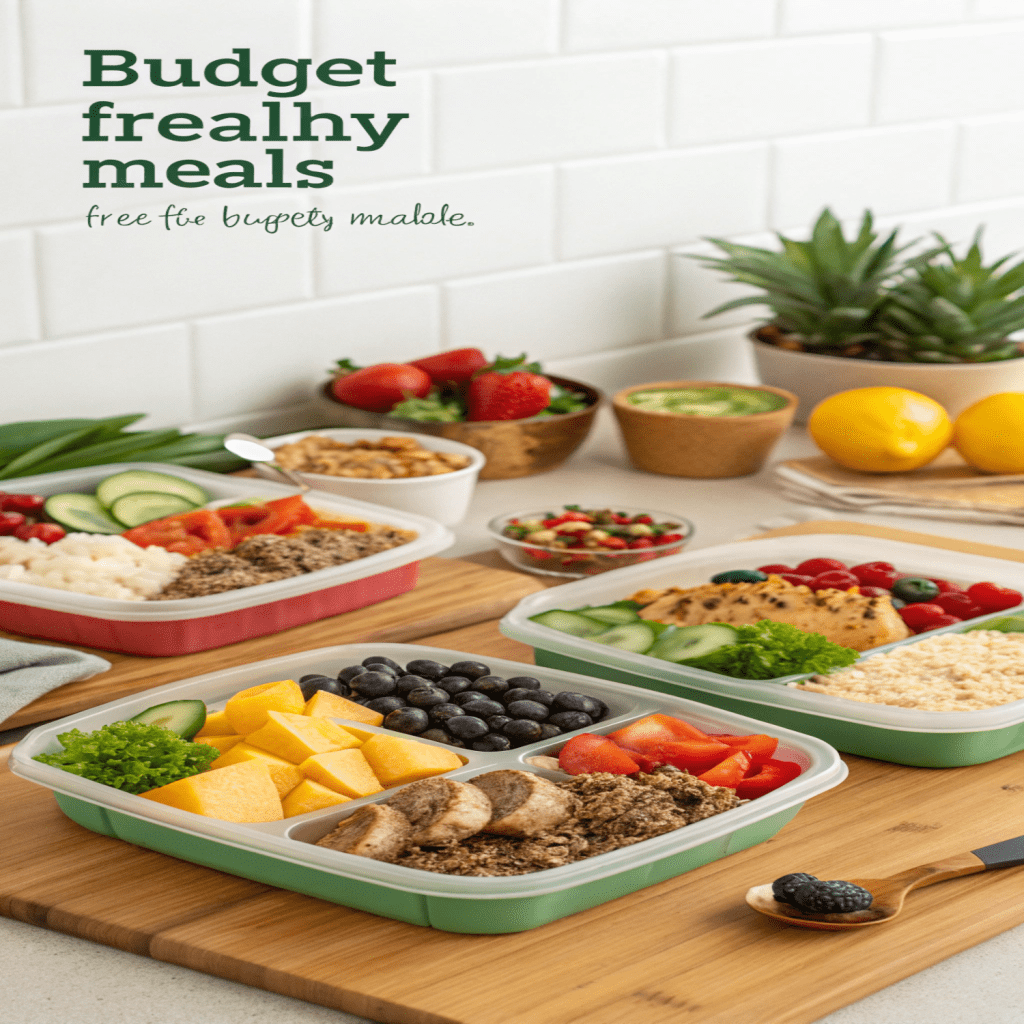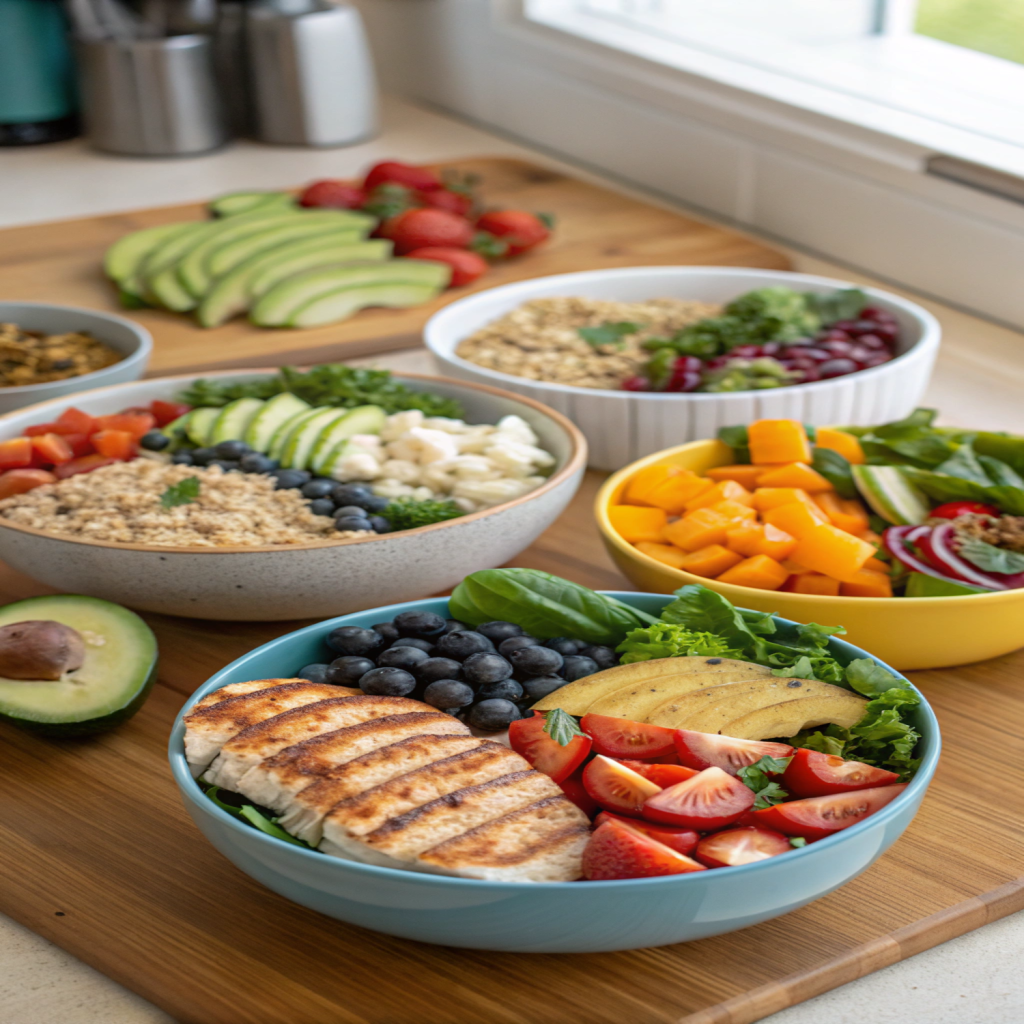
Budget-friendly healthy meals make eating well accessible without breaking the bank. These meals combine affordability with nutrition, offering a practical solution for families, students, and anyone looking to maintain a healthy lifestyle on a budget. This article explores how to create budget-friendly healthy meals, their origins, nutritional benefits, and practical tips for incorporating them into your daily routine.
What Are Budget-Friendly Healthy Meals?
Budget-friendly healthy meals are dishes that prioritize nutrition while keeping costs low. They rely on affordable, nutrient-dense ingredients like whole grains, legumes, seasonal vegetables, and lean proteins. These meals are designed to be easy to prepare, versatile, and satisfying, ensuring you get maximum health benefits without spending a fortune.
Origins of Budget-Friendly Healthy Meals
The concept of budget-friendly healthy meals stems from traditional diets in cultures worldwide, where resourcefulness and simplicity shaped cuisine. For example:
- Mediterranean Diet: Originating from countries like Greece and Italy, this diet emphasizes affordable staples like lentils, chickpeas, and seasonal produce. Families in these regions historically created hearty, nutritious meals using locally sourced ingredients.
- Latin American Cuisine: Dishes like beans and rice or vegetable-heavy stews from Mexico and Central America showcase how inexpensive ingredients can form balanced meals.
- Asian Traditions: In countries like India and Thailand, budget-friendly meals like dal (lentil curry) or stir-fried vegetables with rice have long been staples, combining low-cost ingredients with bold flavors.
These cuisines demonstrate that healthy eating doesn’t require expensive ingredients. Over time, modern dietary guidelines have embraced these principles, promoting affordable, whole foods as the foundation of a nutritious diet.
Why Choose Budget-Friendly Healthy Meals?
Eating healthy on a budget offers numerous benefits:
- Cost Savings: Using inexpensive ingredients like beans, rice, and seasonal vegetables reduces grocery bills.
- Nutritional Balance: These meals often include a mix of macronutrients (carbohydrates, proteins, and fats) and micronutrients (vitamins and minerals).
- Sustainability: Budget-friendly meals often rely on plant-based ingredients, which are environmentally friendly and widely available.
- Accessibility: Affordable ingredients are easy to find in most grocery stores or local markets.
Nutritional Value of Budget-Friendly Healthy Meals
Budget-friendly healthy meals focus on nutrient-dense ingredients that provide essential vitamins, minerals, and energy. Here’s a breakdown of common components and their benefits:
- Whole Grains (e.g., Brown Rice, Quinoa, Oats): Rich in fiber, B vitamins, and complex carbohydrates, whole grains promote digestive health and provide sustained energy. A cup of cooked brown rice (195g) contains approximately 215 calories, 5g of protein, and 3.5g of fiber.
- Legumes (e.g., Lentils, Chickpeas, Black Beans): High in protein, fiber, and iron, legumes support muscle health and satiety. One cup of cooked lentils (198g) offers about 230 calories, 18g of protein, and 15.6g of fiber.
- Vegetables (e.g., Carrots, Spinach, Zucchini): Low in calories and high in vitamins A, C, and K, vegetables boost immunity and overall health. For example, one cup of cooked spinach (180g) provides 41 calories, 5g of protein, and 4g of fiber.
- Lean Proteins (e.g., Eggs, Chicken Breast, Tofu): These provide essential amino acids for muscle repair and growth. One large egg (50g) contains 70 calories, 6g of protein, and vital nutrients like choline.
- Healthy Fats (e.g., Olive Oil, Avocado): Small amounts of healthy fats support heart health and nutrient absorption. A tablespoon of olive oil (13.5g) has 120 calories and 14g of monounsaturated fats.
By combining these ingredients, budget-friendly healthy meals deliver balanced nutrition while keeping costs low.
How to Create Budget-Friendly Healthy Meals

Preparing budget-friendly healthy meals is simple with the right strategies. Follow these steps to plan, shop for, and cook delicious, nutritious dishes.
1. Plan Your Meals
Meal planning saves time and money. Here’s how to start:
- Choose Simple Recipes: Opt for dishes with minimal ingredients, like stir-fries, soups, or grain bowls.
- Batch Cook: Prepare large portions of staples like rice, beans, or roasted vegetables to use throughout the week.
- Incorporate Leftovers: Repurpose ingredients into new meals, such as turning roasted vegetables into a soup or salad.
2. Shop Smart
Maximize your budget with these shopping tips:
- Buy in Bulk: Purchase grains, legumes, and spices in bulk to save money over time.
- Choose Seasonal Produce: Seasonal fruits and vegetables are cheaper and fresher. For example, buy zucchini in summer or apples in fall.
- Opt for Frozen or Canned: Frozen vegetables and canned beans are affordable, long-lasting, and retain nutritional value.
- Compare Prices: Check unit prices at grocery stores or shop at discount retailers like Aldi or Walmart.
3. Use Affordable Ingredients
Focus on versatile, low-cost ingredients:
- Grains: Brown rice, oats, and barley are filling and inexpensive.
- Legumes: Lentils, black beans, and chickpeas are protein-packed and cost-effective.
- Vegetables: Carrots, onions, cabbage, and potatoes are budget-friendly and versatile.
- Proteins: Eggs, canned tuna, and tofu provide affordable protein options.
4. Master Simple Cooking Techniques
You don’t need advanced skills to make tasty meals. Try these methods:
- One-Pot Meals: Combine ingredients in a single pot for easy cleanup, like a lentil stew or vegetable chili.
- Roasting: Roast vegetables and proteins with olive oil and spices for rich flavors.
- Stir-Frying: Quickly cook vegetables and proteins with a small amount of oil for a fast, healthy meal.
5. Add Flavor Without Extra Cost
Enhance meals with affordable seasonings:
- Spices: Cumin, paprika, and garlic powder add depth without breaking the bank.
- Herbs: Fresh parsley or cilantro is inexpensive and elevates dishes.
- Acidic Ingredients: Lemon juice or vinegar brightens flavors for pennies.
Sample Budget-Friendly Healthy Meal Recipes
Here are three easy, affordable recipes to inspire your meal prep. Each serves four and uses common, budget-friendly ingredients.
Recipe 1: Lentil and Vegetable Soup
Ingredients:
- 1 cup dried lentils ($0.50)
- 1 onion, chopped ($0.30)
- 2 carrots, diced ($0.40)
- 2 celery stalks, diced ($0.40)
- 1 can diced tomatoes ($0.80)
- 4 cups vegetable broth ($1.00)
- 1 tsp cumin ($0.10)
- Salt and pepper to taste ($0.05)
- Total cost: ~$2.65 (~$0.66 per serving)
Instructions:
- Rinse lentils under cold water.
- In a large pot, sauté onion, carrots, and celery over medium heat for 5 minutes.
- Add lentils, tomatoes, broth, and cumin. Bring to a boil.
- Reduce heat and simmer for 25–30 minutes until lentils are tender.
- Season with salt and pepper. Serve hot.
Nutritional Value (per serving): ~200 calories, 12g protein, 10g fiber, 35g carbs, 1g fat.
Recipe 2: Chickpea and Spinach Stir-Fry
Ingredients:
- 1 can chickpeas, drained ($0.80)
- 2 cups fresh spinach ($0.75)
- 1 bell pepper, sliced ($0.50)
- 1 onion, sliced ($0.30)
- 2 cloves garlic, minced ($0.10)
- 1 tbsp olive oil ($0.15)
- 1 tsp paprika ($0.05)
- Salt to taste ($0.02)
- Total cost: ~$2.62 (~$0.66 per serving)
Instructions:
- Heat olive oil in a skillet over medium heat.
- Add garlic and onion; cook for 3 minutes until soft.
- Add bell pepper and chickpeas; cook for 5 minutes.
- Stir in spinach and paprika; cook until spinach wilts (2 minutes).
- Season with salt and serve with rice or flatbread.
Nutritional Value (per serving): ~180 calories, 8g protein, 7g fiber, 25g carbs, 5g fat.
Recipe 3: Veggie Fried Rice
Ingredients:
- 2 cups cooked brown rice ($0.50)
- 1 cup frozen mixed vegetables ($0.60)
- 2 eggs, beaten ($0.40)
- 1 tbsp soy sauce ($0.10)
- 1 tbsp vegetable oil ($0.10)
- 2 green onions, chopped ($0.20)
- Total cost: ~$1.90 (~$0.48 per serving)
Instructions:
- Heat oil in a large skillet over medium heat.
- Add frozen vegetables and cook for 4 minutes.
- Push vegetables to one side and scramble eggs in the skillet.
- Add rice and soy sauce; stir-fry for 5 minutes.
- Top with green onions and serve.
Nutritional Value (per serving): ~220 calories, 8g protein, 4g fiber, 30g carbs, 7g fat.
Tips for Sustaining Budget-Friendly Healthy Meals
To make budget-friendly healthy meals a long-term habit, consider these strategies:
- Grow Your Own Herbs: A small windowsill garden with basil or parsley saves money and adds fresh flavors.
- Freeze Extras: Store leftover soups or grains in the freezer for quick meals.
- Join a CSA: Community-supported agriculture programs offer affordable, fresh produce.
- Shop at Farmers’ Markets: Late in the day, vendors often discount produce to clear inventory.
Common Mistakes to Avoid
When preparing budget-friendly healthy meals, steer clear of these pitfalls:
- Overbuying Perishables: Only purchase what you can use before food spoils.
- Ignoring Sales: Check weekly flyers for deals on healthy staples.
- Skipping Meal Prep: Without a plan, you’re more likely to opt for expensive takeout.
- Using Too Much Oil: Excessive oil adds calories and costs; use just enough for cooking.
Budget-Friendly Healthy Meals for Different Diets
These meals are adaptable to various dietary needs:
- Vegetarian/Vegan: Focus on legumes, tofu, and vegetables. Try a quinoa and black bean bowl with avocado.
- Gluten-Free: Use gluten-free grains like rice or quinoa. The veggie fried rice recipe above is naturally gluten-free.
- Low-Carb: Swap grains for cauliflower rice or zucchini noodles in stir-fries.
- High-Protein: Add eggs, canned fish, or affordable cuts of chicken to boost protein.
Environmental and Social Impact
Choosing budget-friendly healthy meals often aligns with sustainable practices. Plant-based ingredients like lentils and rice have a lower carbon footprint than meat-heavy diets. Supporting local farmers through markets or CSAs also strengthens communities and reduces reliance on industrial food systems.
FAQs About Budget-Friendly Healthy Meals
1. How can I make healthy meals cheaper than fast food?
Focus on bulk grains, legumes, and seasonal produce. Batch cooking and meal planning reduce the temptation to eat out.
2. Are canned or frozen foods less nutritious?
No, canned and frozen foods often retain nutrients and are more affordable than fresh options.
3. How do I keep meals exciting on a budget?
Experiment with spices, herbs, and new recipes to add variety without extra cost.
4. Can budget-friendly healthy meals be kid-friendly?
Yes, involve kids in cooking and use familiar flavors like mild spices or sweet vegetables to appeal to them.
Budget-friendly healthy meals prove that eating well doesn’t have to be expensive. By choosing affordable, nutrient-dense ingredients and mastering simple cooking techniques, you can enjoy delicious, nutritious dishes that fit any budget. From their roots in traditional cuisines to their modern-day appeal, these meals offer a practical way to prioritize health without financial strain. Start planning your meals today, and discover how easy and rewarding budget-friendly healthy eating can be.

